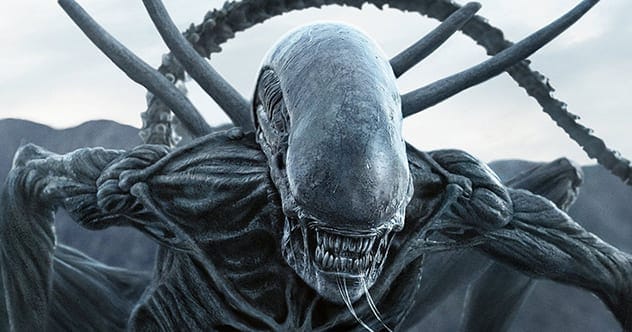After graduating from the Royal College of Art, Ridley Scott dreamt big while working in New York. Saving enough to visit Hollywood, the 22-year-old would later leave his own mark outside the Chinese Theatre. He never imagined it would happen.
Initially, Scott envisioned a career outside of movies. He returned to England, working as a set designer for the BBC. Spotting bigger opportunities in advertising, he and his brother Tony started their own agency, creating iconic commercials like Apple’s 1984 Super Bowl ad. But his first taste of directing came in 1965, with a £65-budget short film, Boy and Bicycle, starring his brother.
After two decades in advertising, Scott aimed for Hollywood. His debut film, The Duellists, won at Cannes in 1977, launching his career. From sci-fi dystopias to Roman amphitheaters, his films have earned $4 billion globally. Here are 10 behind-the-scenes tales about Ridley Scott’s movies.
10. The Duellists’ Budget & That Horse Scene
The Duellists, Scott’s first feature, follows two French hussars during the Napoleonic Wars. Lieutenants Gabriel Feraud and Armand d’Hubert engage in a decades-long rivalry, based on real hussars, fighting a series of intense duels.
Before the film, Scott directed over 2,500 commercials. Instead of waiting for Hollywood, he made his own film, adapting Joseph Conrad’s The Duel. Money was tight. Scott worked without pay, Albert Finney accepted champagne as payment, and the film was shot on location. A horse-drawn carriage was painted to look like two, and sparks in swordfights came from batteries, often shocking Harvey Keitel. Scott’s sons also played roles to cut costs.
Improvisation was key. In one scene, d’Hubert proposes to Adele when a horse interrupted: “[Cristina] started giggling…because she can see the horse has got a giant erection.” Carradine saved the scene, continuing the proposal even as the horse knocked him down.
9.American Gangster Paid Actors to do Nothing
American Gangster faced numerous issues. Antoine Fuqua was fired due to conflicts with executives. Denzel Washington and Benicio del Toro had “pay-or-play” contracts, earning their full salaries despite not filming. Del Toro received $5 million, while Washington got $20 million.
Ridley Scott, Russell Crowe, and Steven Zaillian refined the script. Washington played Frank Lucas, a Harlem gangster who claimed to smuggle heroin using dead soldiers’ coffins. Crowe replaced del Toro as Detective Richard Roberts, meaning the studio paid an actor $5 million for no work.
8. Alien Happened Because of Star Wars
After The Duellists, Scott saw Star Wars: A New Hope, changing his career. “I canceled the film I was going to do, after I saw Star Wars,” he said. The film made him miserable for a week, inspiring him to pursue sci-fi.
Receiving the script for Alien, Scott jumped at the chance. Writer Dan O’Bannon drew inspiration from H.R. Giger, who designed the xenomorph. Giger’s disturbing images were almost held up at customs, alarming officials.
7. Gladiator Got Scott into the Deforestation Business
Gladiator opens with General Maximus (Russell Crowe) battling Germanic tribes. The sequence used thousands of extras, costumes, and functional war machines, including catapults and ballistae.
The costume and props departments built realistic outfits and weapons. Flame effects were created using pipes under the forest floor. Scott filmed in Bourne Woods after discovering the England Forestry Commission planned to destroy part of it. “I’ll burn it to the ground,” Scott said.
6. Black Hawk Down Went the Extra Mile to Achieve Authenticity
After Gladiator, Scott directed Black Hawk Down, about the Battle of Mogadishu. Due to Somalia’s instability, filming took place in Morocco, in the coastal town of Sale. The King of Morocco provided vehicles and helicopters.
Secretary of Defense William Cohen, a film fan, authorized the use of U.S. military equipment, including Black Hawk helicopters. Eight helicopters and 40 U.S. Rangers were used during the shoot.
The production designer negotiated with locals, repairing infrastructure in exchange for filming permissions. The cast, including Orlando Bloom and Ewan McGregor, underwent boot camp to prepare for their roles. “It thanked us for our hard work, and asked us to tell their story true. And it was signed from all the boys who had died,” explained Jason Isaacs.
5. Scott was Technically Fired from Blade Runner
Blade Runner faced numerous issues. Scott took on the film while grieving his brother. The adaptation of Philip K. Dick’s novel was problematic.
The budget increased from $12 million to $20 million, causing the original backer to withdraw. Harrison Ford, playing Rick Deckard, sought guidance from Scott, who focused more on set dressing. Ford and Scott clashed over Deckard’s character, with Scott hinting Deckard was a replicant, angering Ford.
Long hours and nighttime shoots demoralized the crew. Ridley Scott and producer Michael Deeley were fired when the film went over budget. However, the DGA helped reinstate them, though backers had final say over editing, leading to Ford’s disliked voice-over.
4. Hannibal’s Brain-Eating Scene was a Technical Feat
Hannibal grossed $350 million. It memorably concludes with Hannibal Lecter performing a craniotomy and feeding parts of the victim’s brain to him. The scene used CGI and animatronics.
A body cast of Ray Liotta was made; then, an animatronic replica capable of movement and facial animations. A cow’s brain was inserted into the puppet’s head, allowing Anthony Hopkins to simulate delving inside Liotta’s head. CGI was used for shots where Liotta was talking.
Scott’s VFX company digitally replaced Liotta’s skull with an exposed brain. The result was so good that Scott struggled to distinguish between the puppet and the real actor.
3. NASA Used The Martian for Cross-Promotion
The Martian tells the story of Mark Watney, an astronaut stranded on Mars. He must survive until his crew rescues him, using his wits to send a distress signal and grow crops using human waste.
NASA offered its technical expertise, answering the studio’s questions. NASA employees consulted on aspects of the script and filming. NASA viewed the movie as a funding opportunity.
A page of Scott’s script was launched into space. The film’s Comic-Con panel included NASA engineers and astronauts. NASA promoted its ambitions to send a man to Mars by 2030. Days before the film’s release, NASA announced the discovery of liquid water on Mars.
2. Alien: Covenant Killed Alien 5
James Cameron abandoned plans for another Alien sequel after 20th Century Fox greenlit Alien vs. Predator (AVP). Cameron considered the crossover damaging to the series. Cameron and Scott explored the alien’s origins.
Scott used some of their ideas for Prometheus, focusing on the origins of the Space Jockey. The corpse of the creature was almost cut from Alien, but Scott insisted H.R. Giger construct it.
Neill Blomkamp was appointed director for Alien V, with Sigourney Weaver reprising her role as Ellen Ripley. The events of Alien 3 and 4 would have been retconned. However, the project was put on hold until Alien: Covenant’s release. Now, it’s dead in the water, with the studio favoring Scott’s prequels.
1. Legend Underwent 15 Rewrites
Writer William Hjortsberg worked on Scott’s dark fantasy Legend with little direction. The script underwent 15 rewrites.
Scott wanted a darker tale, but executives desired a child-friendly adventure. Hjortsberg’s first draft was 145 pages. Legend tells the story of a world in chaos. At the behest of Darkness, goblins slay a unicorn and kidnap a princess. The script originally featured Darkness seducing the princess, which the studio rejected. After nearly four years of rewrites, the crew began storyboarding the fable.
Ridley Scott’s journey in filmmaking is filled with surprising turns, creative problem-solving, and a relentless pursuit of his vision. These behind-the-scenes stories offer a glimpse into the challenges and triumphs that shaped some of cinema’s most iconic movies.
What’s your favorite Ridley Scott film? Leave your comment below!










